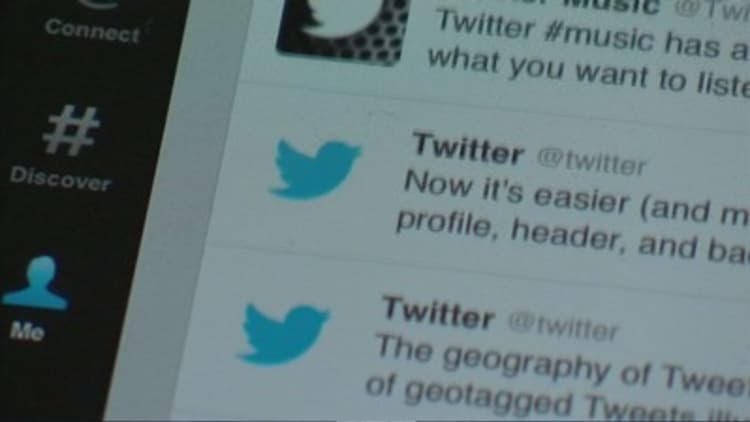
Stripe thinks "social commerce" is going to be big, and it wants to play matchmaker between retailers and the giant social networks building Buy buttons, it announced Monday. The success of this new initiative, however, will likely hinge on how many of the social networks actually get on board. They've signed Twitter to start.
The new product, announced at an event the startup hosted in San Francisco, lets retailers integrate their product catalog just once with Stripe, and then sell everything across social networks and other apps. The one catch: Stripe has to convince a whole bunch of social networks and apps to sign up, too.
At a launch event Monday, the startup announced that Warby Parker and Saks Fifth Avenue are among the first group of retailers using Stripe's new product, dubbed Relay, to sell goods outside of their own e-commerce sites. Stripe also announced that Twitter and the product discovery app ShopStyle would be two of the first platforms the retail partners can sell across.
Pinterest — the social platform that many retailers are the most excited about from an e-commerce perspective — has declined to participate, according to multiple sources. It's not clear if that will change.
"Stripe is a great partner as we continue working together on Buyable Pins," a Pinterest spokesperson said. "While we're not involved in this latest product, we look forward to seeing its evolution."
Stripe CEO Patrick Collison said at the event: "For retailers, there are too many different apps, too many channels that they can integrate with directly. [Relay] helps merchants sell in multiple places with a single integration."
With the launch, Stripe is trying to capitalize on the proliferation of Buy buttons popping up in the last year on the biggest consumer tech platforms in the U.S. Twitter, Pinterest, Facebook and Google have all either launched the capability to buy physical products directly on their platforms or announced plans to do so soon.
The idea behind most of these initiatives is to take advantage of the fact that people are already spending a ton of time on these platforms and discovering products on them even if they did not log on with the intent to shop.
Buy buttons embedded in these platforms, the thinking goes, have the ability to turn those moments of discovery into purchase opportunities and could lead to more sales than if a person had to click to another site to make a purchase. This is especially true on mobile phones where some shopping sites are still not optimized well for small screens.
Big retailers and the social networks face big challenges integrating with each other one by one. Making sure a product being sold on Twitter is actually in stock, for example, is still a challenge for some merchants.
If social commerce takes off — and that's still a big if — Stripe could be poised to be one of the biggest beneficiaries. Up to now, Stripe has been best known as a software maker that helps apps and website owners accept all types of payment methods, from credit cards to China's Alipay to bitcoin.
More from Re/code:
What's the best way to buy an Apple iPhone 6s?
Net neutrality advocate Tim Wu joins NY Attorney General's Office
Microsoft to launch Surface Pro 4, new phones at October 6th event
Its new pitch to companies on either side of the Buy button is that it can be the middleman that does the hard work to connect both parties — retailer with social network or content app — eliminating the need for each side to repeatedly build out these relationships on their own. The product will be free for retailers and merchants who process payments with Stripe; those who don't will have to pay to use it.
But at launch, Twitter is the only one of the big social networks on board and it's not clear which of the others, if any, will follow. Teaming up with multiple social platforms will be key for Stripe. The product cuts out a lot of the challenges for retailers that come with selling stuff on other company's platforms, but may only attract a lot of retailers if it allows them to sell across multiple. In other words, Stripe may have to get other big platforms like Pinterest or Facebook on board, too. After all, a retailer that wants to sell stuff on Twitter or Pinterest can choose to just work directly with one of those platforms rather than going through Stripe.




